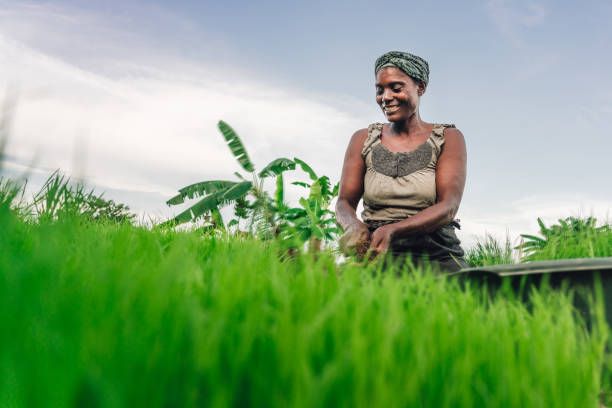Agricultural value chains: A farmer’s means to a greater ending

When you talk about Value chain, this is a set of linked activities that work to add value to a product; it consists of actors and actions that improve a product while linking commodity producers to processors and markets.
The World Bank’s definition of the term ”value chain’’ describes the full range of value adding activities required to bring a product or service through the different phases of production, including procurement of raw materials and other inputs.
Value chains work best when their actors cooperate to produce higher-quality products and generate more income for all participants along the chain, as opposed to the simplest kinds of value chains, in which producers and buyers exchange only price information — often in an adversarial mode.
At the heart of value chain development is the effort to strengthen mutually beneficial linkages for firms to work together and take advantage of market opportunities, create and build trust among participants.

Figure 1: Opportunities in the agriculture value chain
Challenges in the value chain
Farmers face multiple challenges, primary among these are:
- Excessive stress on land, water and soil health
- Lack of knowledge/information about high value/growth products
- Limited exposure to high productivity practices
- Weak market linkages
- Inefficient supply chains with high levels of food wastage, and an acute dependence on rainfall.
In order to create an income revolution in the agricultural sector we need to capture the entire value chain right from research to the stage where farmers are able to realise money in their pockets.
Digital opportunities across the agricultural value chain
A large number of digital technologies have to be scaled up, some of which have been done already. For example, we have FarmShield™ where you can have your farm at your fingertips. With FarmShield™ you can remotely control your farm from your mobile phone and dashboard while getting real-time information on fertigation and irrigation needs for your crop. The agricultural sector is now looking forward to using a large number of digital technologies at the pre-production stage, in production and in the post production.
Some of the key opportunities that can create value and boost farmer income are:
1. Digital and analytics — Digitization and analytics will play a critical role in building your farm for the future. Potential disruptions that could unlock value through the food chain are:
- Precision farming including integrating field data, weather patterns to drive farming advice to farmers, and yield forecasting
- Efficient farm lending with electronic applications, disbursal of loans, insurance payouts linked to weather, field data, Direct Benefits Transfer in agriculture
- Centralized platform integrating farmers and wholesale markets, to provide timely information for price realization
2. Financing and crop insurance — can help in strengthening the ecosystem
- Provide innovative equipment — financing models to farmers through partnerships with manufacturers, weather forecast agencies, and digital partners.
- Offer easy financing for community infrastructure for storage and transportation.
- Create digital ecosystems for financing and crop insurance.
3. Establishing market linkages between farmers and buyers — This will establish transparency in pricing and better value, especially for perishable products. It could also help to increase farmer incomes by at least 8 to 10 percent. In addition, it will enable the downstream players to source more effectively by eliminating intermediaries. Farmer–producer organizations (FPOs) are already aggregating supply and supporting farmers towards this goal.
Agriculture in developing countries often is characterized by dual value chains operating in parallel for the same product: one informal or traditional, and the other formal or modern. Small holders are frequently involved in informal chains that deliver products to local middlemen and then to small local stores.
Formal value chains can deliver the same product, usually in better or more uniform quality, from larger farms or more organized groups of small farmers to more commercial wholesalers and from there to supermarkets or exporters. This duality has been accentuated by the explosive growth of supermarkets in developing countries. It can limit many small producers to markets characterized by low-quality products, and low prices and low returns for them — hence a frequent concern is to find ways to integrate small producers into more modern value chains, both domestic and export-oriented.
Conclusion
Value chains reside at the core of high-impact and sustainable initiatives focused on improving productivity, competitiveness, entrepreneurship, and SME growth.



